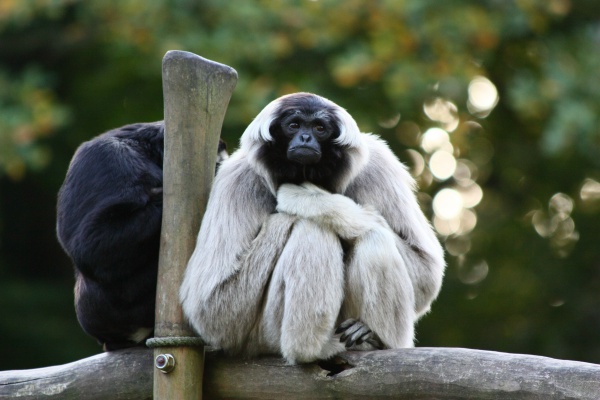Facts About Pileated (Capped) Gibbon
The pileated gibbon, a distinguished member of the gibbon family Hylobatidae, is an intriguing primate renowned for its distinct sexual dimorphism in fur coloration. Males are adorned with black fur, while females exhibit a striking white-grey coat accented with black patches on their belly and head. Unfortunately, this beautiful species is classified as Endangered and is listed in CITES Appendix I, primarily due to habitat destruction and hunting.
These gibbons are indigenous to eastern Thailand, western Cambodia, and southwest Laos. They lead an arboreal lifestyle, adeptly swinging through the trees, and are known for forming monogamous pairs. Their loud, distinctive vocalizations serve to demarcate their territory.
Presently, approximately 35,000 pileated gibbons reside in Cambodia, while around 30,000 are found in Thailand. Conservation organizations such as Wildlife Alliance in Cambodia are vigorously working to protect these primates. Their efforts encompass rescue, rehabilitation, and release programs. The Wildlife Rapid Rescue Team plays a pivotal role by confiscating animals from the illegal wildlife trade and rehabilitating many of them in secure habitats. Gibbons rescued from the meat and pet trade are brought to centers like the Phnom Tamao Wildlife Rescue Centre, where they undergo rehabilitation and preparation for a return to the wild through breeding programs.
A significant milestone in conservation efforts occurred in December 2013, when a pair of pileated gibbons was successfully released into the protected forests of the Angkor UNESCO World Heritage Site in Cambodia. This initiative aims to repopulate the forests surrounding the Angkor temples with these remarkable creatures. Conservation actions such as these are crucial for the survival of the pileated gibbon species.

 Cambodia
Cambodia